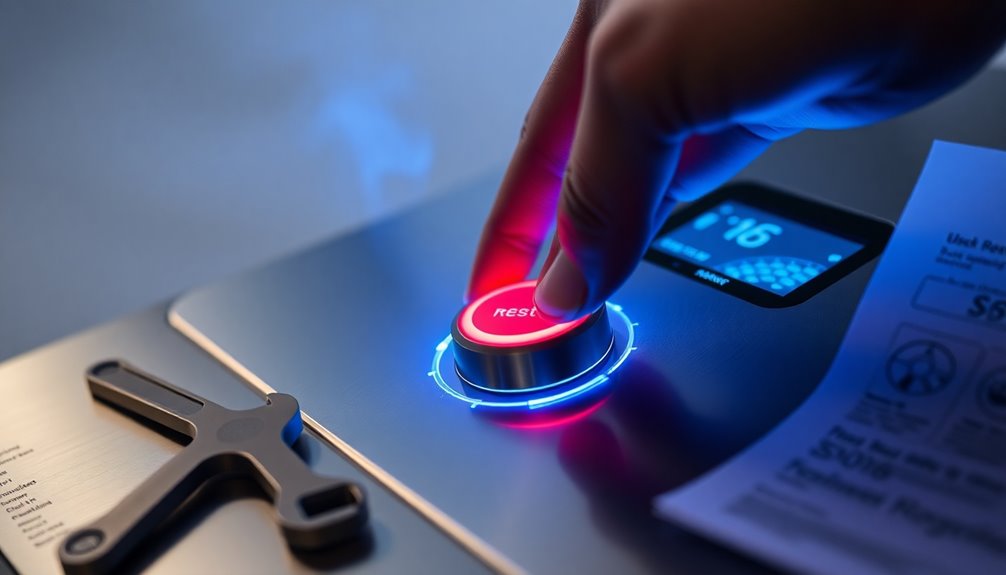To get your boiler out of standby mode, start by checking your target temperature settings and raise them to around 95°F. Next, inspect the power supply for any outages or tripped breakers. Make sure the zone control system is functioning, and look for reset buttons on the control panel. If still inactive, examine the thermostat and check for low water pressure or high limit switch issues. Remember, regular maintenance can help avoid these problems. If you face persistent issues, there's more to evaluate for effective solutions and safety measures to keep your system running smoothly.
Key Takeaways
- Check and adjust the thermostat settings to ensure they are set above the current room temperature.
- Inspect the power supply for any outages or tripped breakers affecting the boiler's operation.
- Verify that the zone control system and valves are functioning properly and receiving power.
- Look for any reset buttons on the control panel or transformer that may need to be engaged.
- Consult the user manual for specific troubleshooting steps related to your boiler model.
Understanding Boiler Standby Mode
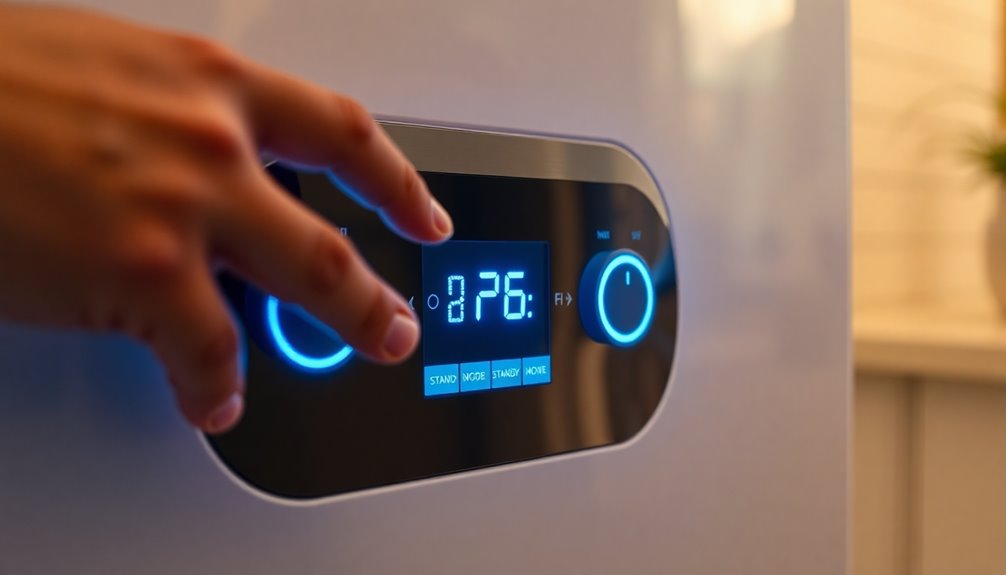
Understanding boiler standby mode is vital, especially when your system isn't heating as expected. In this state, your boiler remains powered but doesn't actively heat water, often showing no error codes or maintenance warnings.
Common reasons for a boiler stuck in standby mode include power supply issues, thermostat malfunctions, or incorrect settings that hinder burner ignition.
Zone control systems can complicate matters, as faulty zone valves or wiring might prevent the boiler from receiving activation signals.
Regular maintenance, like flushing the system to check for sediment buildup, can help avert these issues.
During troubleshooting, inspect safety switches and relays to verify they're functioning properly, as these components play an important role in your boiler's operation.
Initial Troubleshooting Steps
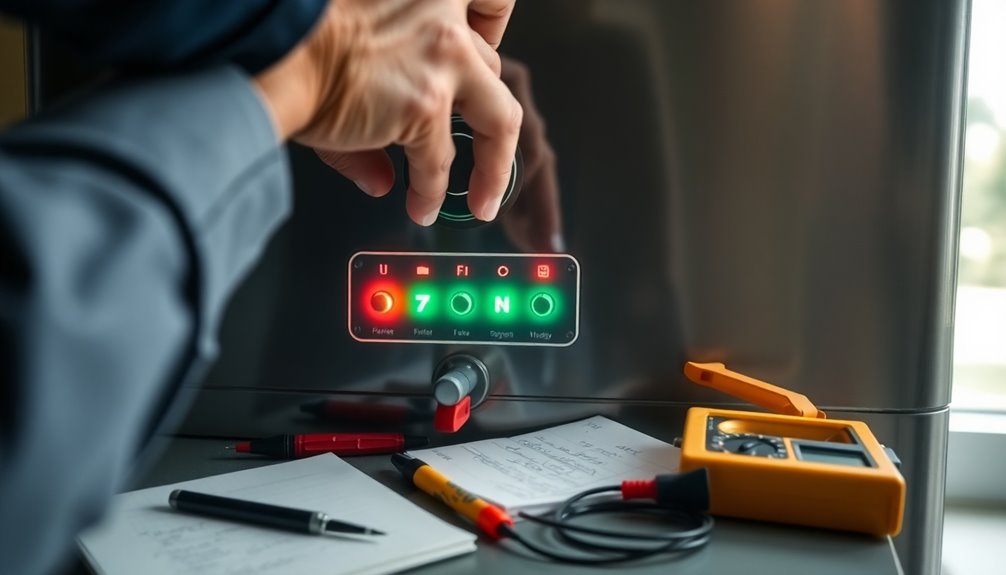
When dealing with a boiler stuck in standby mode, taking the right initial troubleshooting steps can make all the difference.
Start by checking the target temperature settings; raising it to around 95°F might prompt activation.
Next, inspect the power supply for any outages or tripped breakers that could affect the boiler's operation.
Examine the zone control system and verify all zone valves are functioning and receiving power, as this is essential for exiting standby mode.
Look for any reset buttons on the control panel or transformer that might need to be pressed.
Finally, consult the user manual for specific troubleshooting guidelines and confirm that all safety features, like high limit switches, are operational to allow the boiler to function properly.
Common Causes of Standby Issues
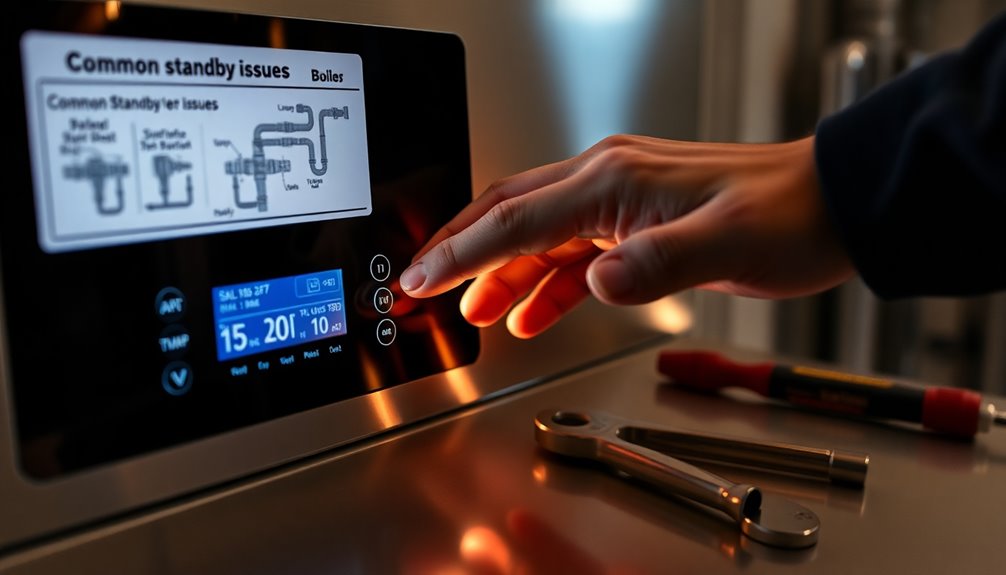
Several factors can keep your boiler stuck in standby mode despite your troubleshooting efforts.
A malfunctioning thermostat often fails to send the necessary signals to activate the burner, which can be due to wiring issues or a faulty device.
Additionally, power supply problems, like blown fuses or tripped circuit breakers, may prevent your boiler from receiving the electricity it needs.
Zone control issues can arise if the zone valves aren't powered or engaged, leaving the boiler unresponsive to heating demands.
High limit switches can trip for safety reasons, forcing your boiler into standby mode until reset.
Ultimately, low water pressure can trigger safety mechanisms, putting your boiler in standby mode to prevent damage.
Importance of Professional Assistance
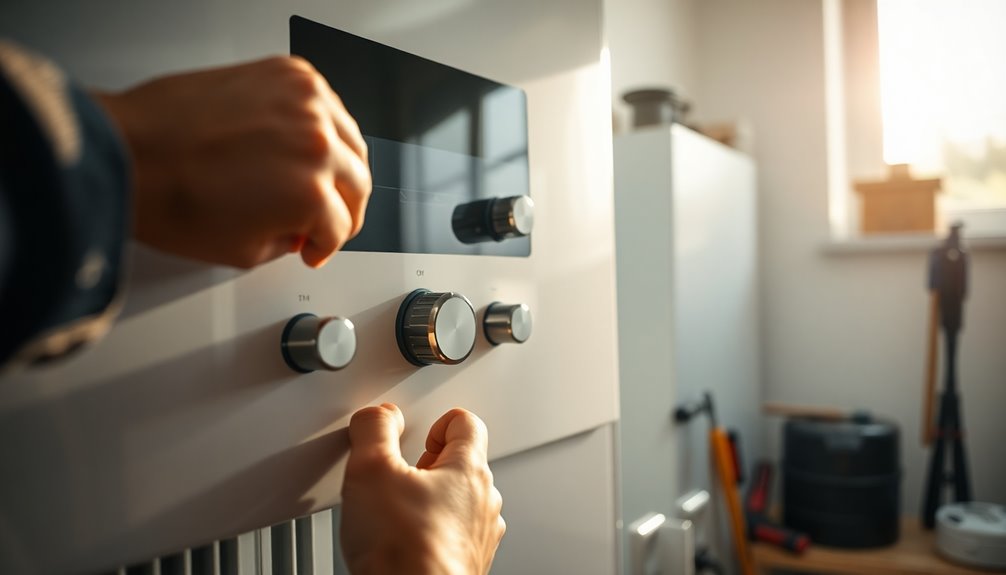
Although DIY troubleshooting can be tempting, relying on professional assistance is often essential for resolving boiler issues effectively. Engaging a qualified HVAC technician guarantees a thorough approach to your heating system, allowing for an all-encompassing evaluation of potential problems.
Consider these key benefits of professional help:
- Expertise in diagnosing hidden boiler issues
- Safe handling of safety mechanisms to prevent accidents
- Resolution of complex problems like high-pressure damage
- Access to local service providers who know your area
- Long-term safety and efficiency of your heating system
Safety Precautions to Consider
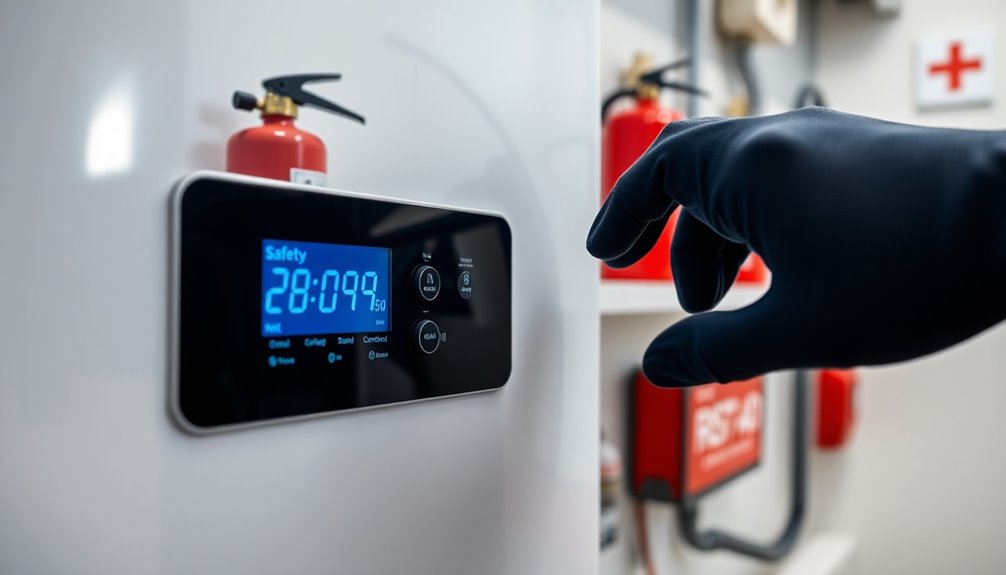
Taking the necessary safety precautions is essential for guaranteeing your boiler operates efficiently and safely. Always monitor the pressure gauge and sight glass to avoid catastrophic failures. Bypassing safety controls can lead to severe operational issues and personal injury, so never compromise on this. Regular maintenance and inspection of safety systems are vital for peak functionality. If you encounter any safety concerns, turn off the boiler immediately and seek expert evaluation.
| Safety Precaution | Importance |
|---|---|
| Monitor Pressure Gauge | Prevents unsafe pressure levels |
| Maintain Safety Controls | Guarantees system reliability |
| Regular Maintenance | Avoids operational issues |
| Inspect Vents | Prevents damage |
| Consult Professionals | Guarantees long-term safety |
Frequently Asked Questions
How to Get a Boiler Out of Standby Mode?
To get your boiler out of standby mode, start by checking the target temperature on the control panel; raising it above 70°F often activates the burner.
Make sure your thermostat's set to a temperature that needs heat.
Verify all power connections and check for any issues with zone valves.
If everything looks good but it's still unresponsive, consult your user manual or call a qualified HVAC professional for further help.
How Do I Get My Furnace Out of Standby Mode?
To get your furnace out of standby mode, start by checking the thermostat settings; make certain they're set to your desired temperature.
Next, inspect the power supply and fuses to confirm everything's working correctly.
You can also try pressing the reset button on the control panel.
Finally, verify that all zone valves and relays are functioning properly, as any malfunction could keep your furnace in standby mode.
What Does It Mean When a Boiler Is on Standby?
Imagine your boiler as a sleeping giant, resting quietly until it's called to action.
When a boiler is on standby, it's not actively heating water or providing warmth. This often happens when there's no demand for heat, like when the thermostat's set too low or zone controls aren't responsive.
The boiler's just waiting for you to need its warmth again, ready to spring into action when the temperature drops or hot water's required.
What Is the System Standby on a Boiler?
The system standby on a boiler means it isn't actively heating, but it's ready to kick in when needed.
You might notice it sitting idle without any error codes, which can be confusing. It typically enters this mode due to low thermostat settings, power issues, or a lack of heat demand.
Understanding this helps you know when to check settings or connections to guarantee your boiler operates effectively when you need it.
Conclusion
In the dance of warmth and comfort, your boiler shouldn't be sidelined in standby mode. By following the troubleshooting tips, you can coax it back to life, just like a flower blooming in spring after a long winter. Remember, if the issues persist, don't hesitate to seek professional help; sometimes, even the strongest flowers need a gentle hand to thrive. Keep safety in mind, and soon enough, your home will radiate the warmth you crave.
